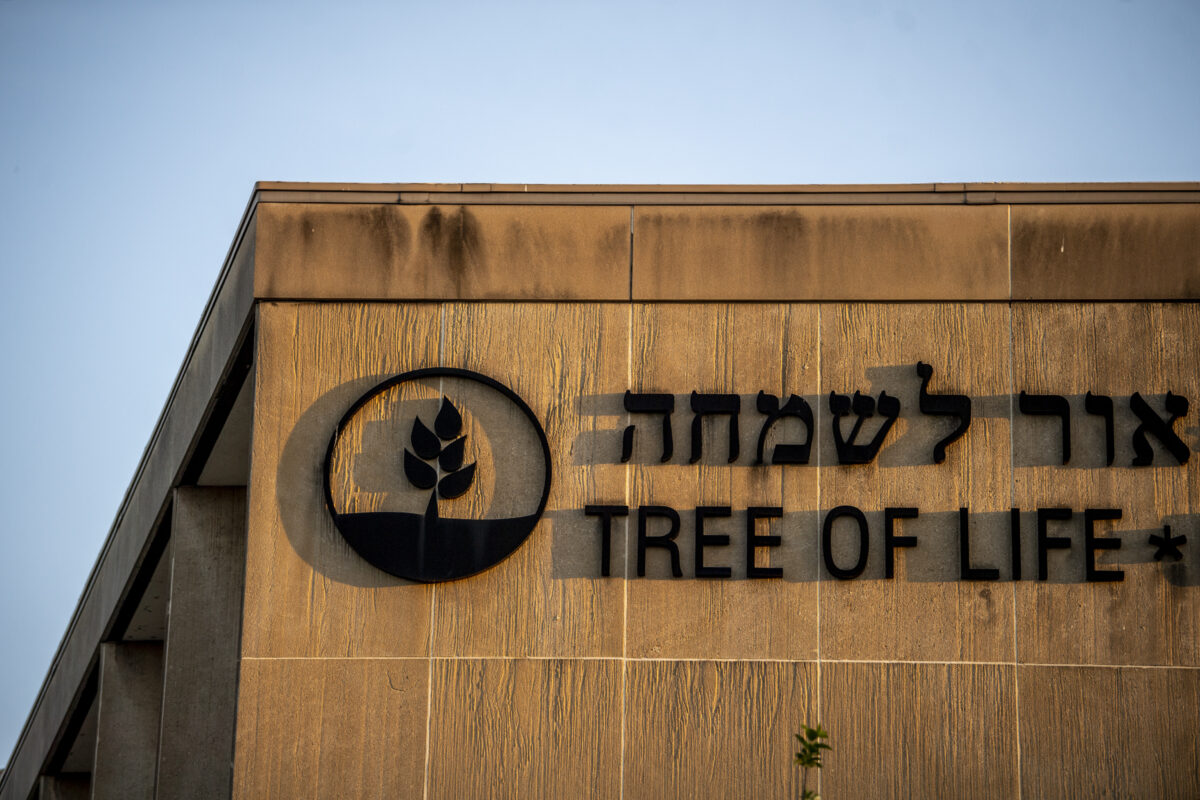As jury selection dragged on at the federal courthouse Friday, the director of the 10.27 Healing Partnership met with reporters across the street to discuss the laborious task of picking average citizens to decide the fate of the man accused of murdering 11 worshippers at the Tree of Life synagogue building in 2018.
“I am impressed with the thoroughness of this process,” said Maggie Feinstein, “and the delicate care that everybody from the judge to the two sides of the legal teams takes in honoring the dignity of all the potential jurors.”
After five days, no jurors had yet been seated in USA v. Robert Bowers.
But that’s by design.
The plan is to assemble a large enough pool of eligible jurors before lawyers on both sides start using their strikes — each gets 20 — to arrive at 12 jurors and six alternates.
More than two dozen were eligible as of Friday. Others had been eliminated for cause as the parties moved to strike them, mostly because of their stance on the death penalty one way or the other.
Jurors had filled out questionnaires a few weeks earlier in which they ranked their opinion on capital punishment on a scale of 1 to 10, with one being strongly against.
All last week and this week — and likely for several more weeks to come — jurors have been brought before U.S. District Judge Robert Colville and seated face to face with him in his eighth-floor courtroom. A phalanx of government lawyers and defense attorneys sit on either side of the judge. The defendant is there, too, taking notes on a legal pad as two U.S. marshals keep an eye on him.
This could be an intimidating setup for the uninitiated. But Colville seems able to put jurors at ease with a congenial approach designed to elicit their true feelings about their ability to impose a death sentence when the time comes to sign a verdict slip.
“There are no right or wrong answers,” he tells each one.
As part of the questionnaire process, prospective jurors had been asked if they would vote for death automatically based on the facts of the crime or if they could impose a penalty less than death.
Colville and the lawyers are then drilling down to see if those jurors could truly listen to both sides before making a decision. In lawyer-speak, the prosecutors will present what they call aggravating factors favoring death. The defense team will present mitigating factors favoring life in prison. It’s up to the jurors to weigh each and decide.
Colville wants to make sure no juror is selected who has already made up his or her mind.
Some prospective jurors, often citing religious beliefs, have said they support an “eye for an eye” approach to justice while others said they don’t support capital punishment.
Friday’s court session was typical of how this process has played out — and illustrative of why it takes so long to seat a jury in a case like this.
One African American woman who leads Bible studies in prisons cited the “thou shalt not kill” commandment she learned in church.
“I don’t think I believe in the death penalty,” she said.
One of the prosecutors, Soo Song, asked her what might change her mind. She said she didn’t know — “something heinous” maybe. She said executing someone doesn’t help those left hurting but also said that “there may be something that could change my mind.”
After the juror left, prosecutors moved to strike her because they said she wouldn’t consider a death sentence.
Another prospective juror said he didn’t believe in the death penalty and would have to see “overwhelming evidence” to vote for it — and even then doubted he could impose death.
Prosecutors moved to strike him, too. Defense attorney Matthew Rubenstein, who has been doing most of the questioning for the defense team, objected.
Colville listened to both sides, as he has done every day, but didn’t make any rulings. He has been saving that for the next day.
Another prospective juror said he favored capital punishment — he was an 8 out of 10 on that — and noted on his questionnaire that he had previously had an interest in America First and other far-right organizations. He also expressed the opinion that hate crimes are often “hoaxes blamed on white people.”
Under questioning, he used the example of someone spray-painting an incorrectly rendered swastika on a building in an effort to make it appear that a hate crime had been committed. The motivation, he said, might be “monetary gain” or “media attention.”
In addition, he said he’d posted on an online forum where others had made jokes about the synagogue shooting.
Assistant U.S. Attorney Troy Rivetti asked him what he thought about Jewish people.
He said they have “high IQs” and are “somewhat insular.”
After he left, Rivetti moved to strike him for “obvious bias” against Jews, saying the man’s opinions about Jews are “tropes” of alt-right online forums.
Rubenstein objected, arguing that the man’s opinion doesn’t mean he endorses the far right and that the First Amendment “allows us to have offensive views.”
The judge listened and moved on.
And so it has gone every day since April 24.
The selection process is expected to last several weeks, possibly taking most of May. The trial could last into July.
Bowers, 50, of Baldwin Borough, is the fourth defendant in the history of the Western District of Pennsylvania to face the federal death penalty. None of the others was executed. One pleaded guilty and two others were spared by juries.
This story is part of ongoing coverage of the Pittsburgh synagogue shooting trial by the Pittsburgh Jewish Chronicle and the Pittsburgh Union Progress in a collaboration supported by funding from the Pittsburgh Media Partnership.
Torsten covers the courts for the Pittsburgh Post-Gazette, but he's currently on strike. Reach him at jtorsteno@gmail.com.


